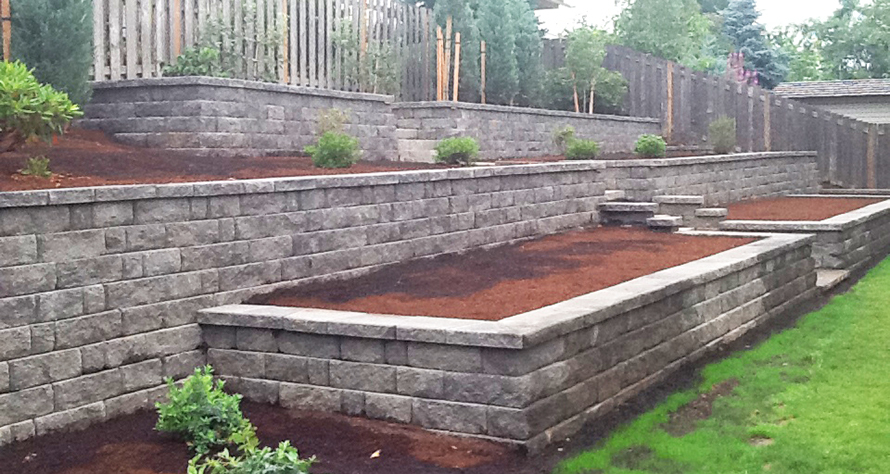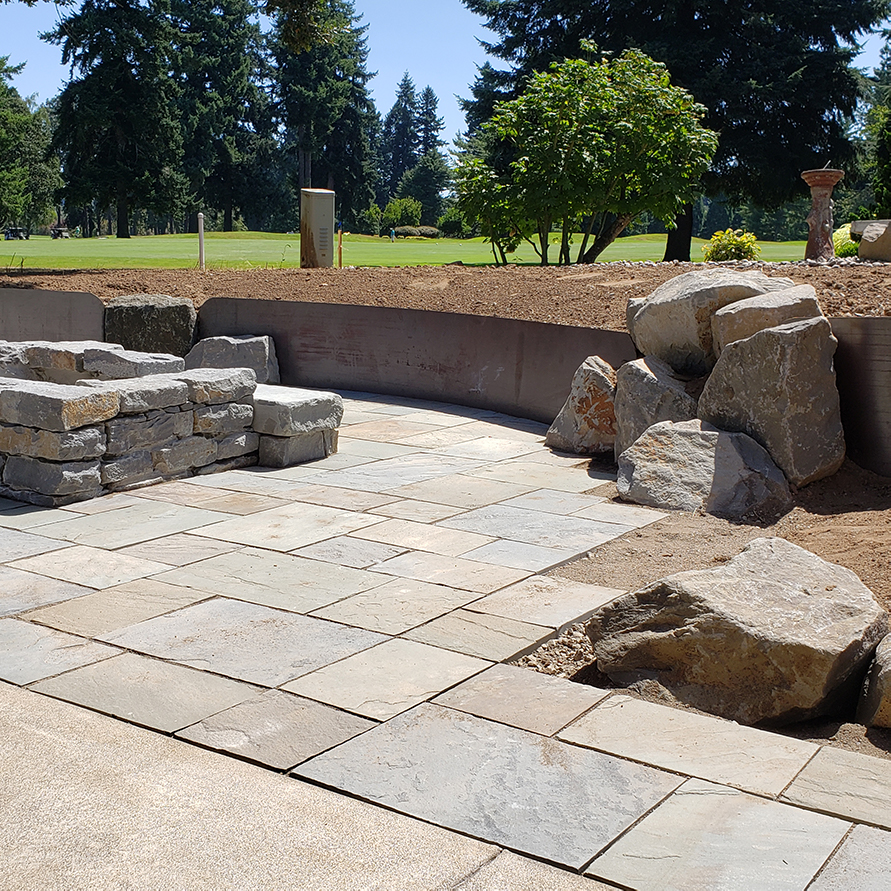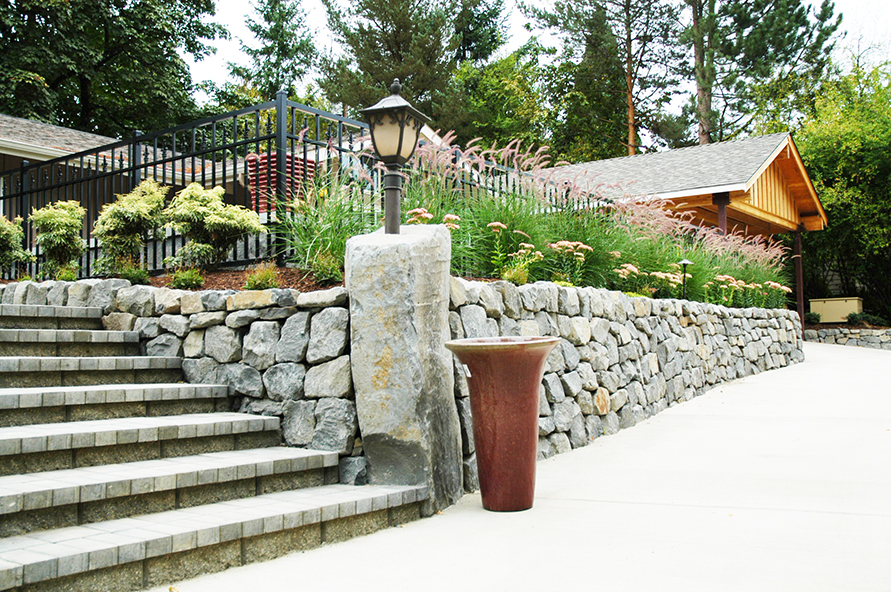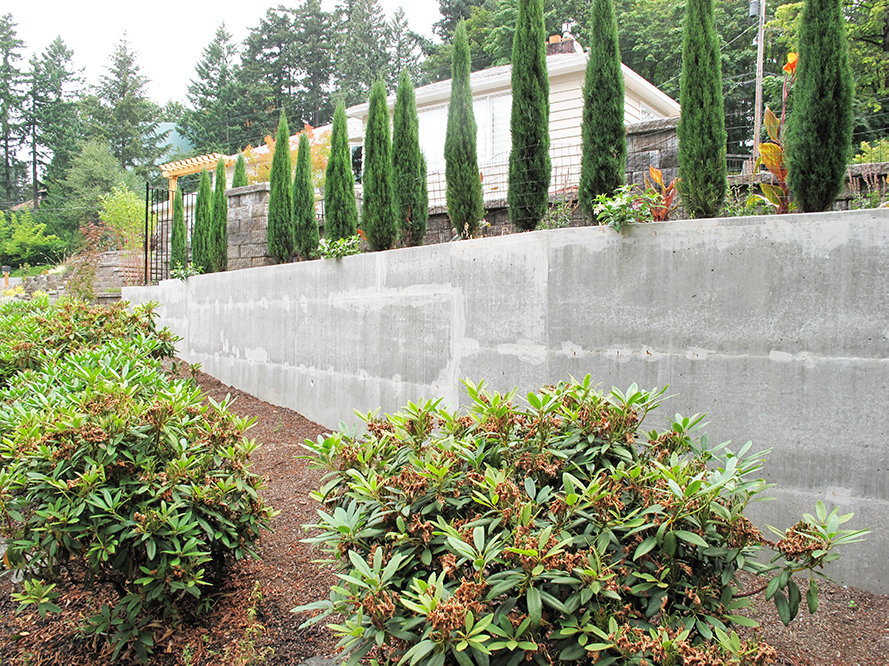Retaining Walls Done Right

The Pacific Northwest has a rugged landscape. To the experts at Landscape East & West, that means mountains and valleys, forests, and lots of rocks. While altering terrain is what gives this area interest and beauty, it can also bring challenges when creating landscapes.
Here, we tend to rely a lot on retaining walls to level off sloping yards to make them usable spaces. But there is a right way and a wrong way to install a retaining wall and too often in our travels we see the results of those incorrectly installed. Let’s take a look at what to consider to ensure a retaining wall in your yard stands the test of time.
Planning & Design
Installing a retaining wall correctly requires careful planning, adherence to local building codes and regulations, and proper construction techniques. When Landscape East & West is contracted to install a retaining wall we start with planning which means first a conversation with our client to determine the purpose of the wall. Is it for erosion control, creating usable space, added seating, garden plots, or some combination? There’s a difference between installing a retaining wall to hold back land versus one that is simply decorative.

Next, we assess the site conditions. We test the soil to determine how well it compacts and drains and we similarly examine drainage patterns to see where rain is likely to wash away soil. Combined, soil and drainage give us an idea of the slope stability, as does the angle of the slope, and surrounding landscape. Plants and trees help keep soils in place so the presence of greenery can be a plus.
With the site assessed, we move into determining the best type of wall to fit the project. We’ll calculate the height and length of the wall needed to retain the soil, as well as structural requirements, while our clients help choose materials that will look great in their space and also fit their budget.
Retaining wall materials can include:
- Steel
- Brick
- Stone
- Concrete (poured or blocks)
- Wood
- Interlocking Blocks
Working together we can decide the best option to perform as needed and look beautiful.
With the materials chosen, it’s time to start design. The experts at Landscape East & West develop a detailed design that includes wall dimensions, reinforcement needs, drainage provisions, and backfill specifications. We also ensure compliance with setback requirements and property line restrictions, as well as permit requirements. Since we’ve worked in the greater Portland area for decades, we are very familiar with the rules and regulations of the different towns and neighborhoods, and the varying processes for ensuring all i’s are dotted and t’s crossed.

Construction
After permits and plans are in place, we dig in. We start with site preparation. Vegetation, debris, and any other obstacles are cleared from the construction area and then we excavate and level the ground where the base of the wall will be installed.
The soil is compacted and a foundation of gravel, concrete footing, or a reinforced concrete slab is installed. The type of material depends on the soil conditions which is why it’s so important to know the soil type long before the work begins. The backfill material must be compacted in layers to prevent settlement. If needed, drainage pipes or gravel may be placed behind the foundation to prevent water buildup and ensure proper drainage. Improper drainage will eventually cause the wall to collapse under the pressure built up behind the wall. This is probably the most common cause of wall collapse that we see.
Other considerations come into play during construction. There are manufacturer guidelines and engineering specifications. A key is using the proper reinforcement techniques like geogrids, tiebacks, or anchor systems for walls that are tall or heavy. We ensure the wall is built level and plumb to maintain structural integrity and there may need to be added drainage features like weep holes or French drains.
With the wall firmly in place, it’s time for the final touches. The wall is capped with coping or capstones to provide a finished look and protect the wall from water infiltration. Then we address the landscape around the wall, improving aesthetics with plants and shrubs that do double duty by helping control erosion.

Maintenance
As with everything in a landscape, maintenance is important to keeping your yard looking beautiful and performing as it was intended. We will regularly inspect retaining walls for signs of damage, drainage issues, or settlement, and promptly address any problems to prevent further damage or structural failure. Debris will be cleared from the drainage features, and, in some cases, sealants or coatings will be applied to protect the wall material from deterioration.
Proper installation and maintenance are essential for the long-term performance and safety of retaining walls. Hiring a qualified contractor or engineer experienced in retaining wall construction can help ensure that the project is completed correctly and meets all requirements. Don’t take chances. Set up a free consultation with our experts to get started.
